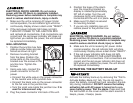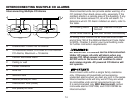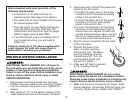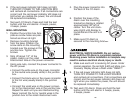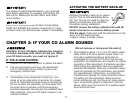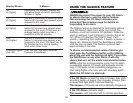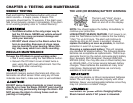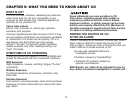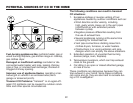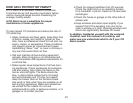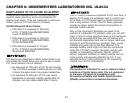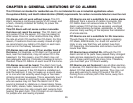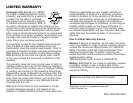
23
HOW CAN I PROTECT MY FAMILY?
A CO Alarm is an excellent means of protection.
It monitors the air and sounds a loud alarm before
carbon monoxide levels become threatening for
average, healthy adults.
A CO Alarm is not a substitute for proper
maintenance of home appliances.
To help prevent CO problems and reduce the risk of
CO poisoning:
• Clean chimneys and flues yearly. Keep them free
of debris, leaves, and nests for proper air flow.
Also, have a professional check for rust and cor-
rosion, cracks, or separations. These conditions
can prevent proper air movement and cause
backdrafting. Never “cap” or cover a chimney in
any way that would block air flow.
• Test and maintain all fuel-burning equipment
annually. Many local gas or oil companies and
HVAC companies offer appliance inspections for
a nominal fee.
• Make regular visual inspections of all fuel-burn-
ing appliances. Check appliances for excessive
rust and scaling. Also check the flame on the
burner and pilot lights. The flame should be
blue. A yellow flame means fuel is not being
burned completely and CO may be present.
Keep the blower door on the furnace closed.
Use vents or fans when they are available on all
fuel-burning appliances. Make sure appliances
are vented to the outside. Do not use
portable/outdoor grills or barbecue indoors, or in
garages or on screen porches.
• Check for exhaust backflow from CO sources.
Check the draft hood on an operating furnace
for a backdraft. Look for cracks on furnace heat
exchangers.
• Check the house or garage on the other side of
shared wall.
• Keep windows and doors open slightly. If you
suspect that CO is escaping into your home,
open a window or a door. Opening windows and
doors can significantly decrease CO levels.
In addition, familiarize yourself with the enclosed
checklist, read this manual in its entirety, and
make sure you understand what to do if your CO
Alarm sounds.



